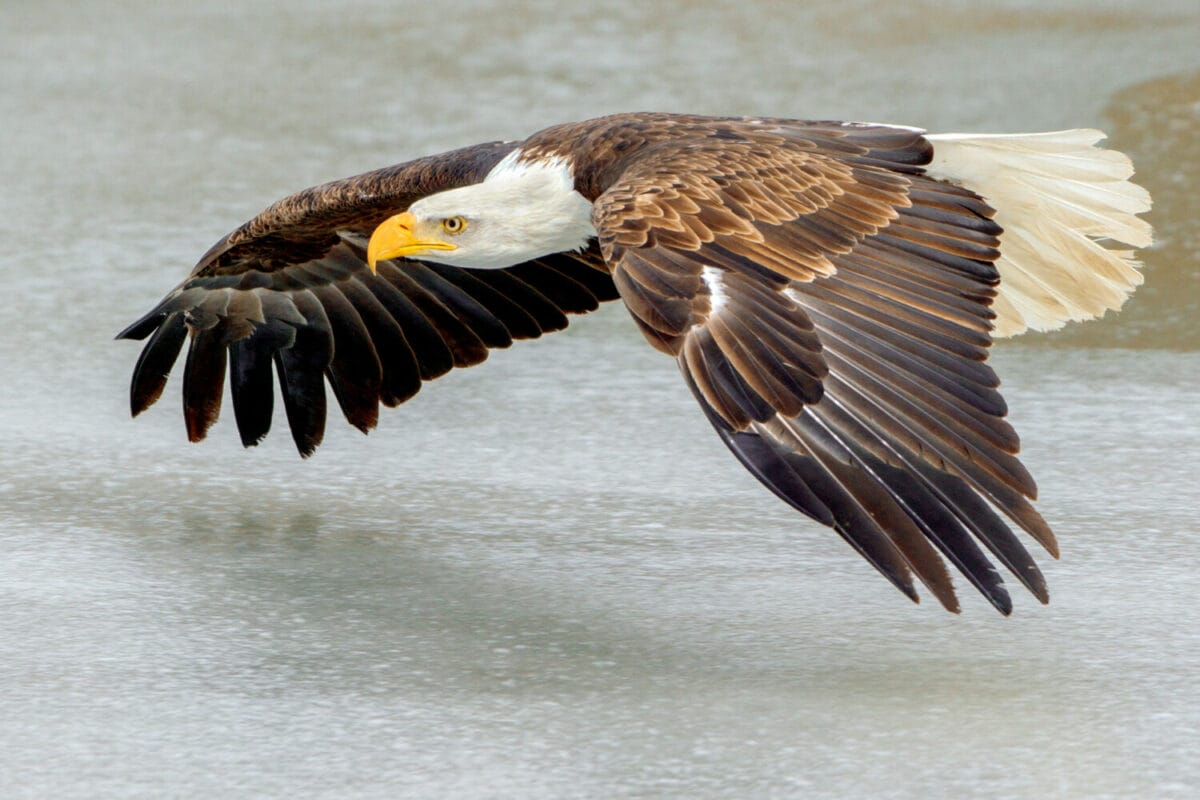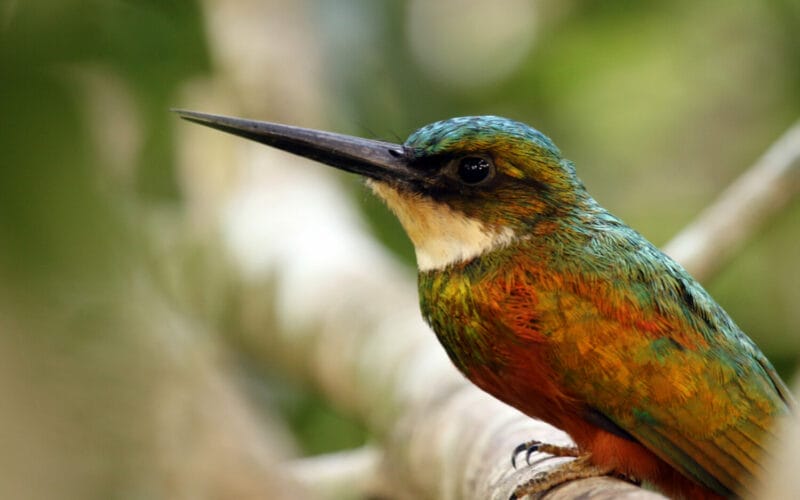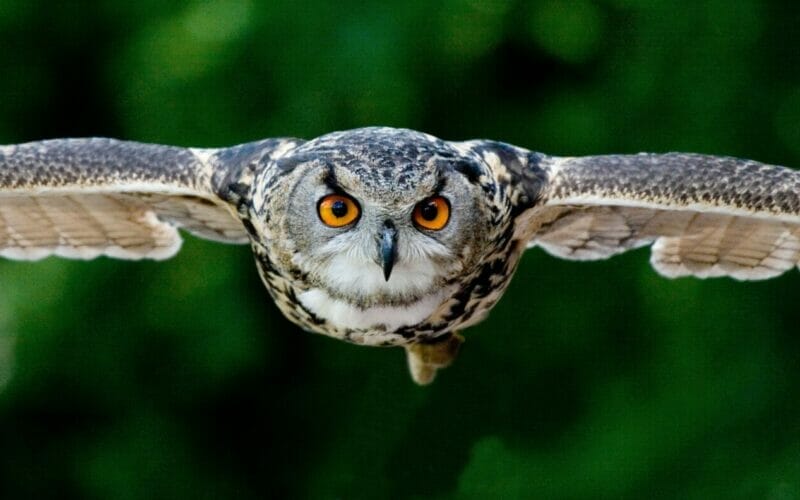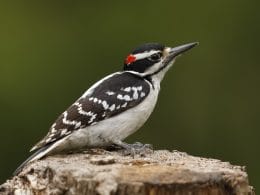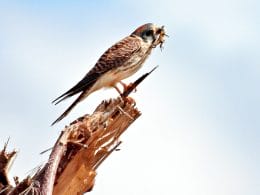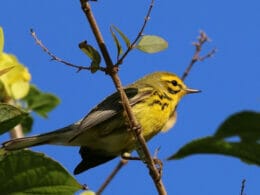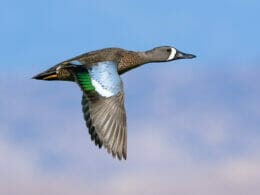The unique environment in Florida means it is a mecca for large water birds. The extensive coastline, the Everglades and the proximity to the Caribbean means that there are potentially hundreds of species either resident or passing through the state. In this post, we will be reporting on big bird species seen in Florida.
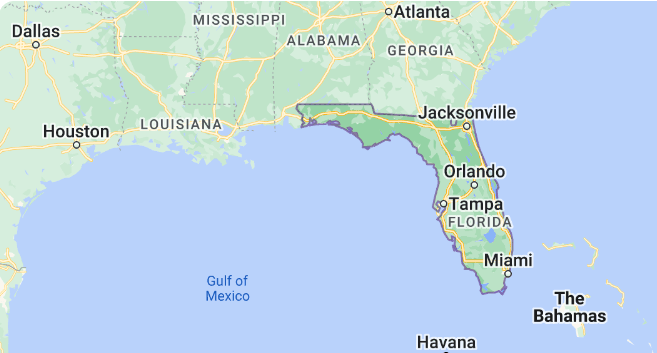
State of Florida
The Florida Peninsula and Panhandle are fairly low lying and contain a huge number of ecosystems. Much of Florida is subtropical and, of course, the Everglades are probably the most famous wetlands in the world. But there are also huge prairies and forests as well as swamps and depression marshes.
From the coastline comes many estuaries, mangroves and coral reefs. This coastline is modern and the sand ridge running down the center of the peninsula used to be a series of islands. These became isolated as the sea receeded and created many areas where flora and sauna developed into unique species. The Florida Peninsula we know today has been dramatically influenced by human interference but there still remains an incredible diversity of animal and bird life.
Birds of Florida
It is surprising to see that Florida only ranks at number 7 out of the 51 states on eBird with 546 species. That is behind Oregon and New Mexico – who knew? I guess it makes up for it with the sheer quantity of birds that can be seen here. There are over 40 sightings of groups of more than 10,000 birds. In our list of large birds seen in Florida, the water birds dominate and it was an easy task to find 10 of the best.
Ten of the Best
Great White Egret (Ardea alba)

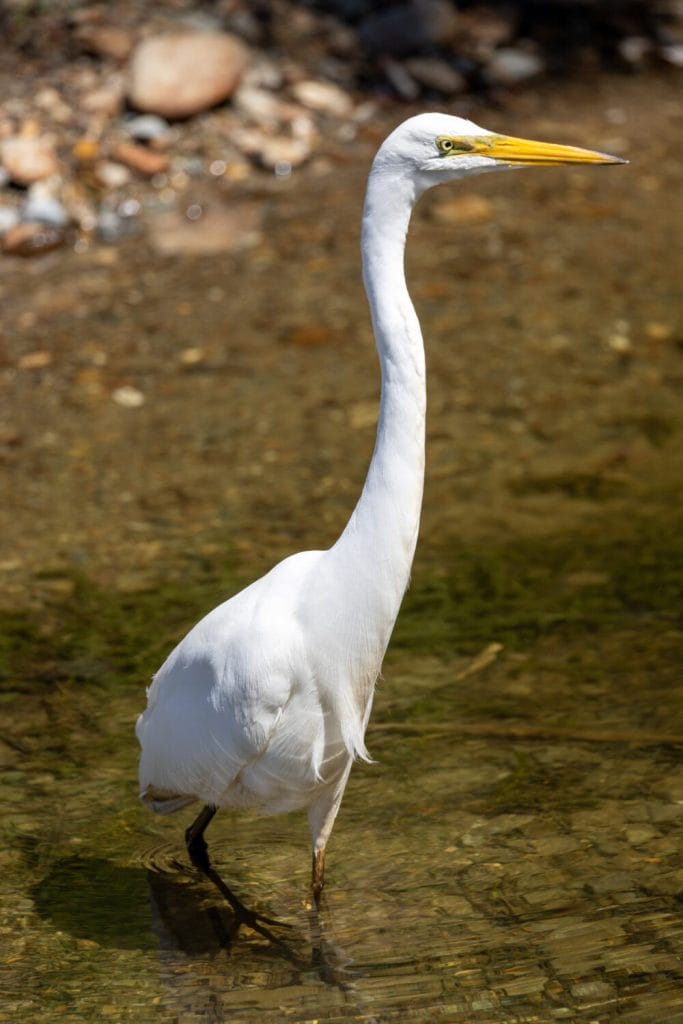
Identification and Size
An elegant and very large heron which is always pure white with a yellow bill and legs. It is separated from other herons by checking that the line below the eye, extends past it.
Length: 37 – 40.9 inches
Wingspan: 51.6 – 57.1 inches
Weight: 35.3 ounces
Distribution
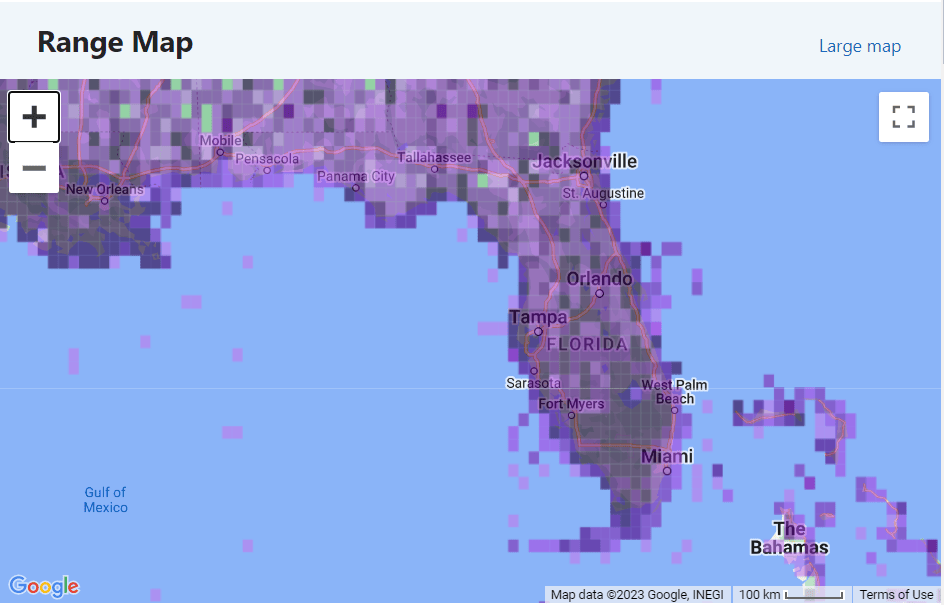
The Great White Egret is a common resident of Florida and is widely seen.

Call
Diet
The Great White Egret predominately eats fish but is an opportunist and will also take crustaceans, and vertebrates.
Interesting Fact
Great White Egrets can be identified in flight by their very slow wing beats, just 2 per second.
Great Horned Owl (Bubo virginianus)
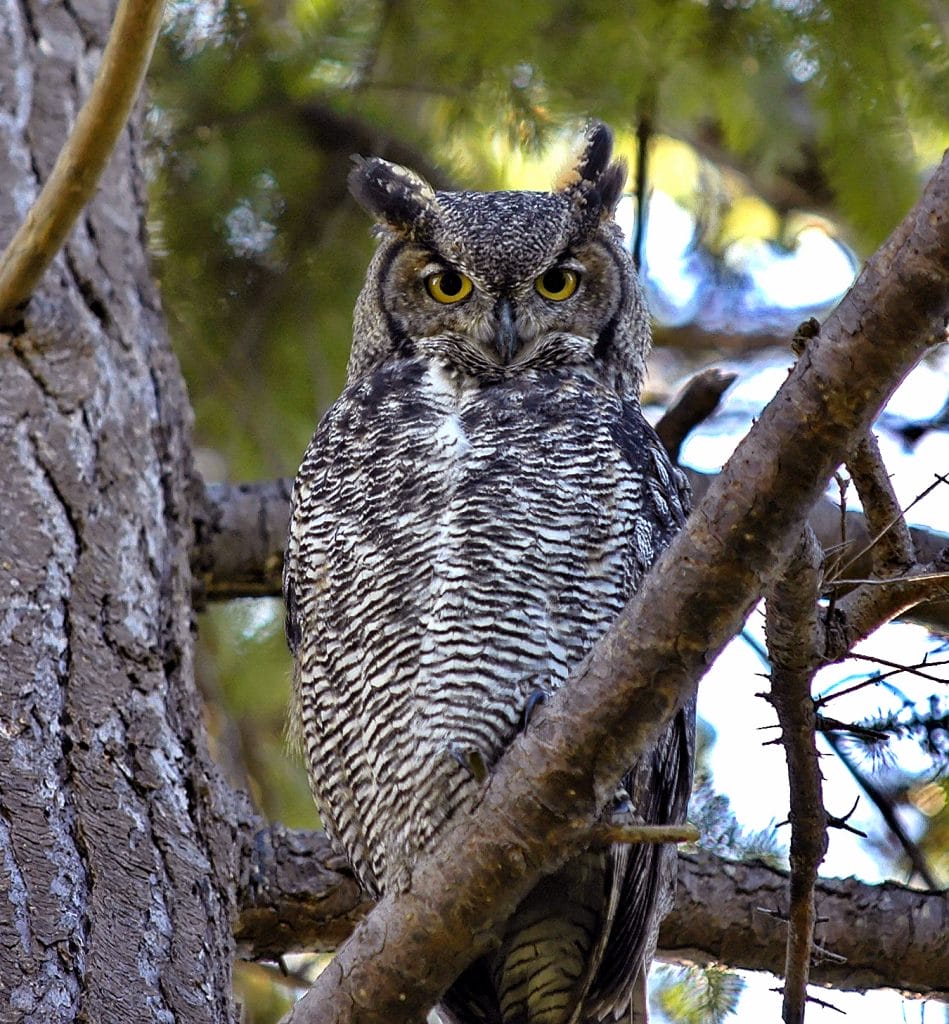

Identification and Size
The Great Horned Owl is the largest of its family present in Florida. It is easily recognizable by the tufts on its ears. Otherwise, it looks like a standard owl with varying gray patterned plumage. It may also be a reddish brown color at times.
Length: 18.1 – 24.8 inches
Wingspan: 39.8 – 57.1 inches
Weight: 32.1 – 88.2 ounces
Distribution
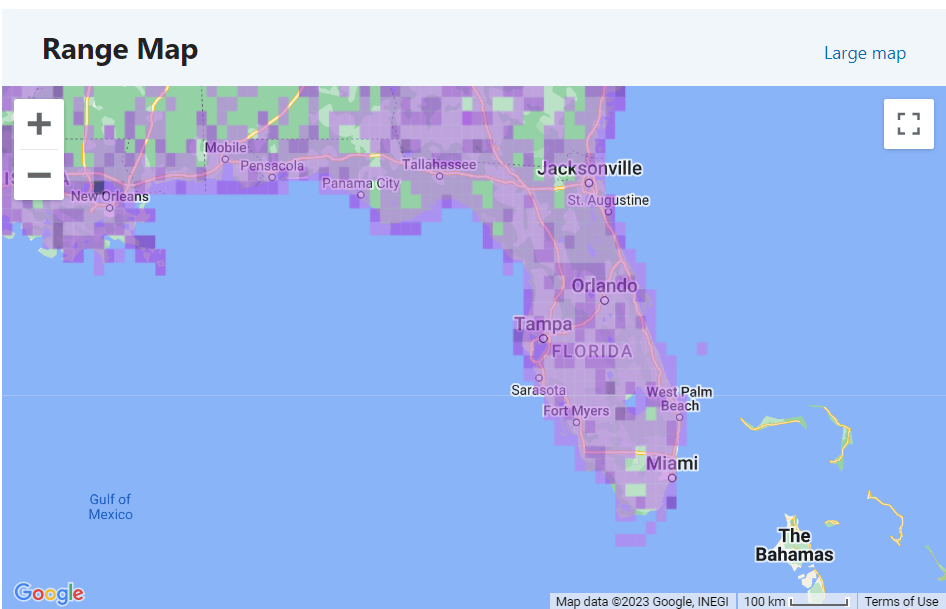
This owl is resident in Florida and as shown in the eBird range map above, can be seen across the entire state.

Call
Diet
The Great Horned Owl has a very wide diet and hunts mostly at night. Food ranges from fairly small rodents to hares and large birds like herons and geese.
Interesting Fact
The Great Horned Owl has incredible strength. Its talons are capable of demobilising its prey with up to 28 pounds of force.
Sandhill Crane (Antigone canadensis)

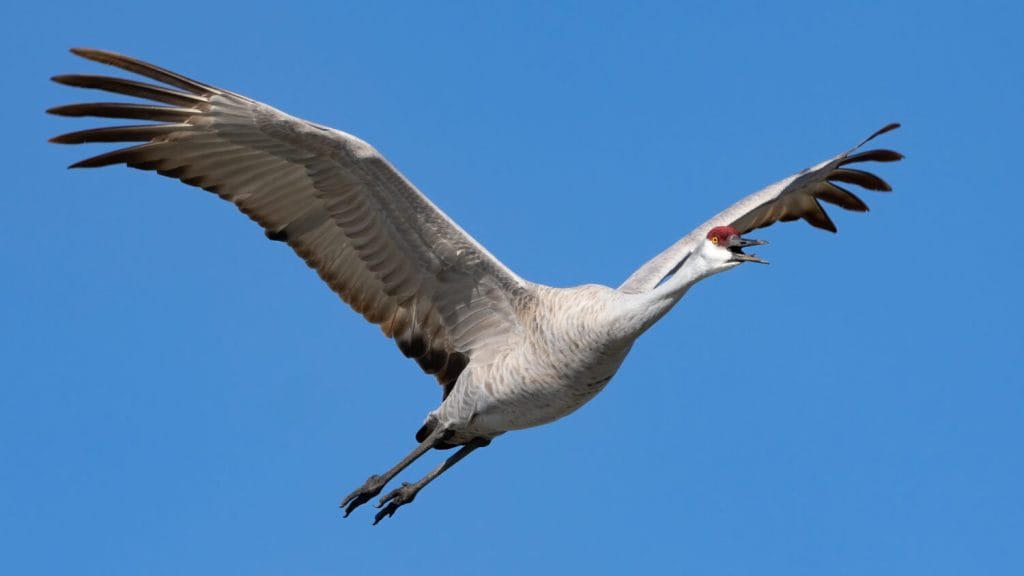
Identification and Size
The Sandhill Crane is a very large, mainly gray bird. It may have some red markings on the body. A bright orange eye is complemented by the dark red head.
Length: 47.2 inches
Wingspan: 78.7 inches
Weight: 119.9 – 172.8 ounces
Distribution
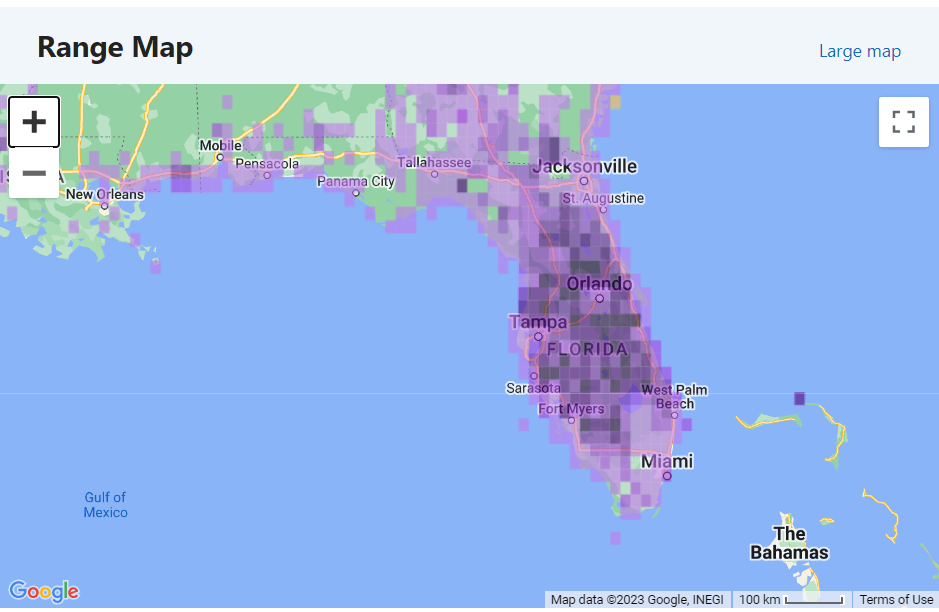
The Sandhill Crane is a Florida resident and can be found throughout the state with populations concentrated in the middle of the stated from Jacksonville to Fort Myers.

Call
Diet
The Sandhill Crane is omnivorous and probes the ground with its bill as it forages for food. It will eat mostly grains.
Interesting Fact
Sandhill Crane chicks are up and about within 8 hours of hatching. They are even capable of swimming.
Anhinga (Anhinga anhinga)
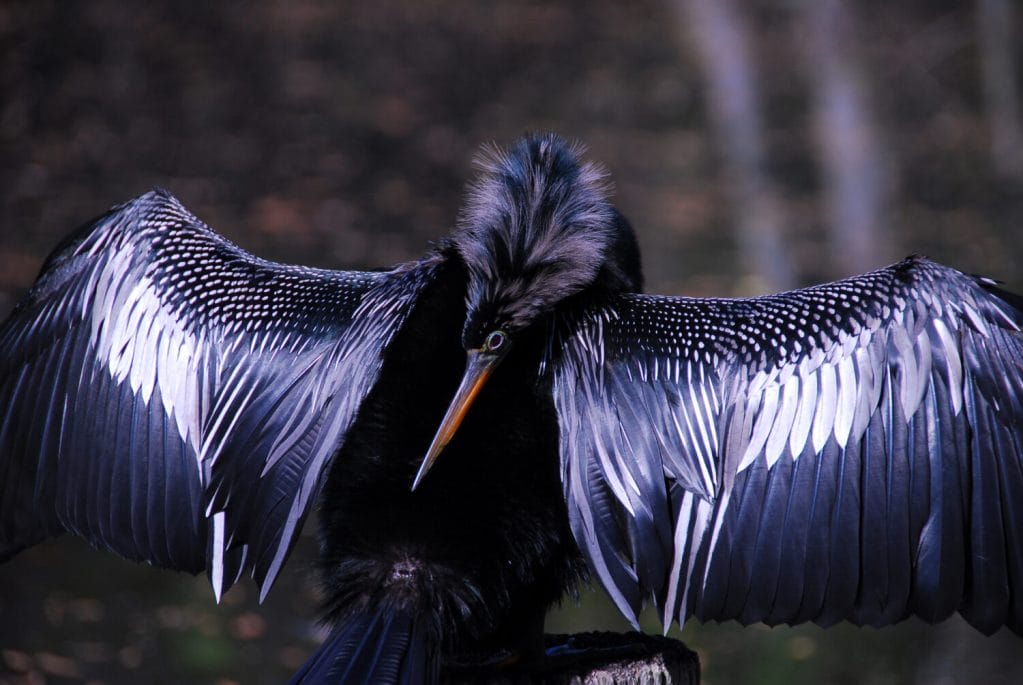
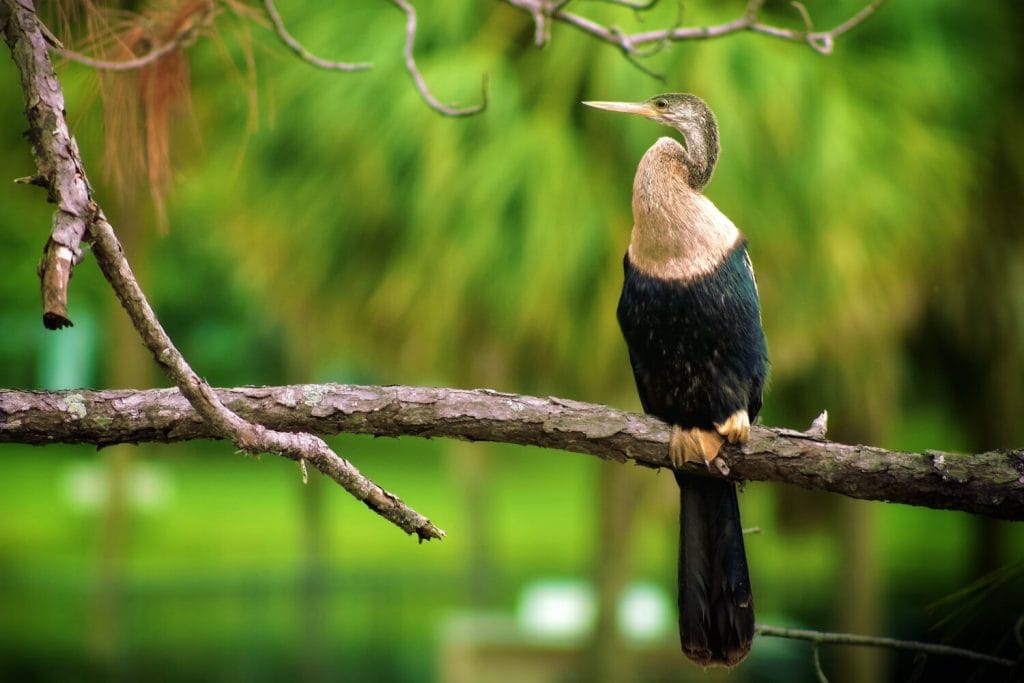
Identification and Size
A large cormorant-like waterbird with a long neck and and pale bill. The male is black with silvery marks on the wings. The female is similar but has a brownish neck and sharp demarcation into the black breast.
Length: 29.5 – 37.4 inches
Wingspan: 42.9 inches
Weight: 46.7 – 47.6 ounces
Distribution

The Anhinga is a common resident of Florida and can be seen across the state in any suitable habitat of bodies of water.

Call
Diet
The primary diet of the Anhinga is fish but as an opportunist, it will also take snakes, amphibians, insects and crayfish.
Interesting Fact
The Anhinga is sometimes known as the snake bird because of its appearance in the water. Its bill is fairly pointed and with its long neck, it has a definite snake-like look.
Brown Pelican (Pelecanus occidentalis)
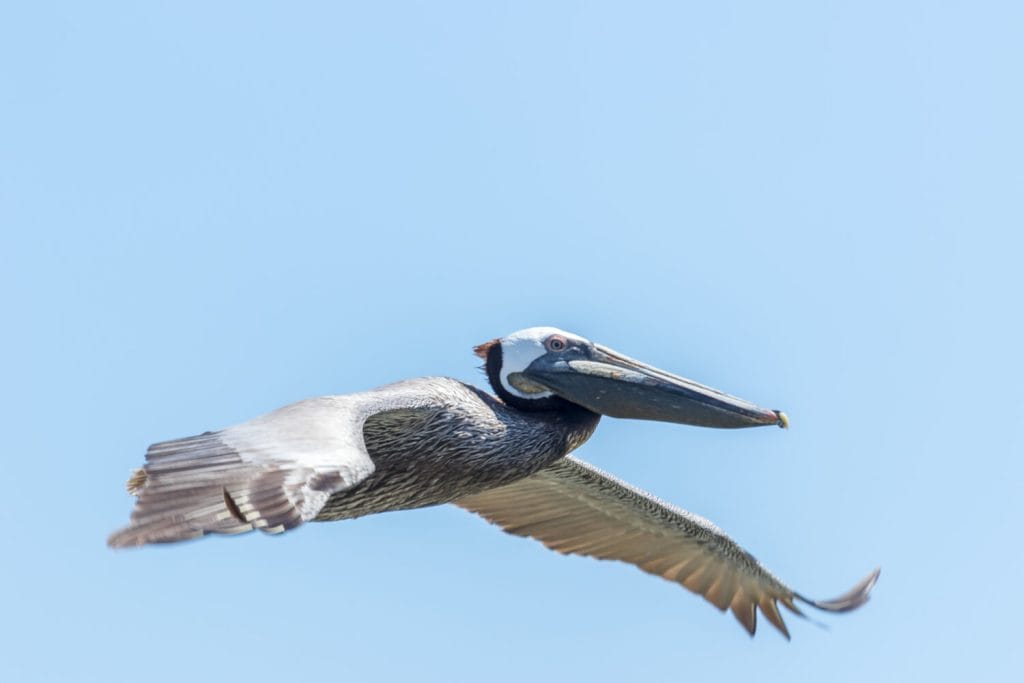

Identification and Size
The Brown Pelican is a large bodied bird with a range of brown and cream plumage. A cream neck leads to a yellow crown and, of course, that huge bill and pouch.
Length: 39.4 – 53.9 inches
Wingspan: 78.7 inches
Weight: 70.5 – 176.4 ounces
Distribution

Although the eBird map above shows sightings of the Brown Pelican all across the state, it is really a coastal bird and rarely seen on inland fresh water. It is resident in Florida.

Call
Diet
The pelican’s diet consists almost exclusively of fish.
Interesting Fact
It is dog eat dog in the fishing world. This pelican is not above begging and scavenging from fishing boats but it also has its challengers. Gulls will wait nearby and try to steal fish from the pelican.
Limpkin (Aramus guarauna)
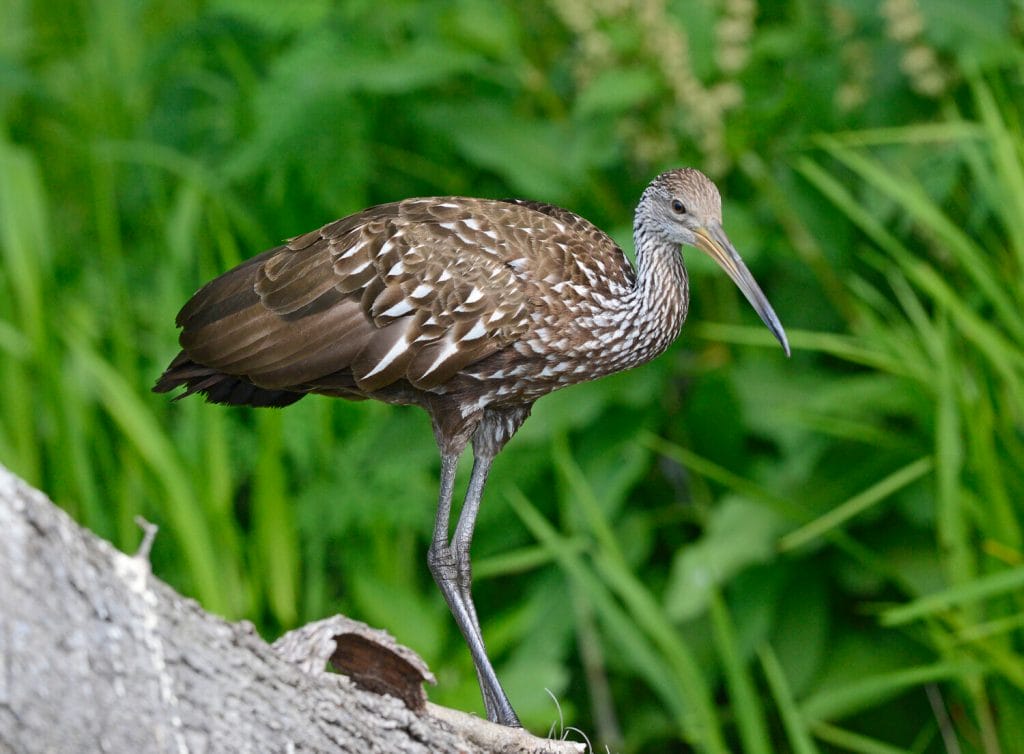
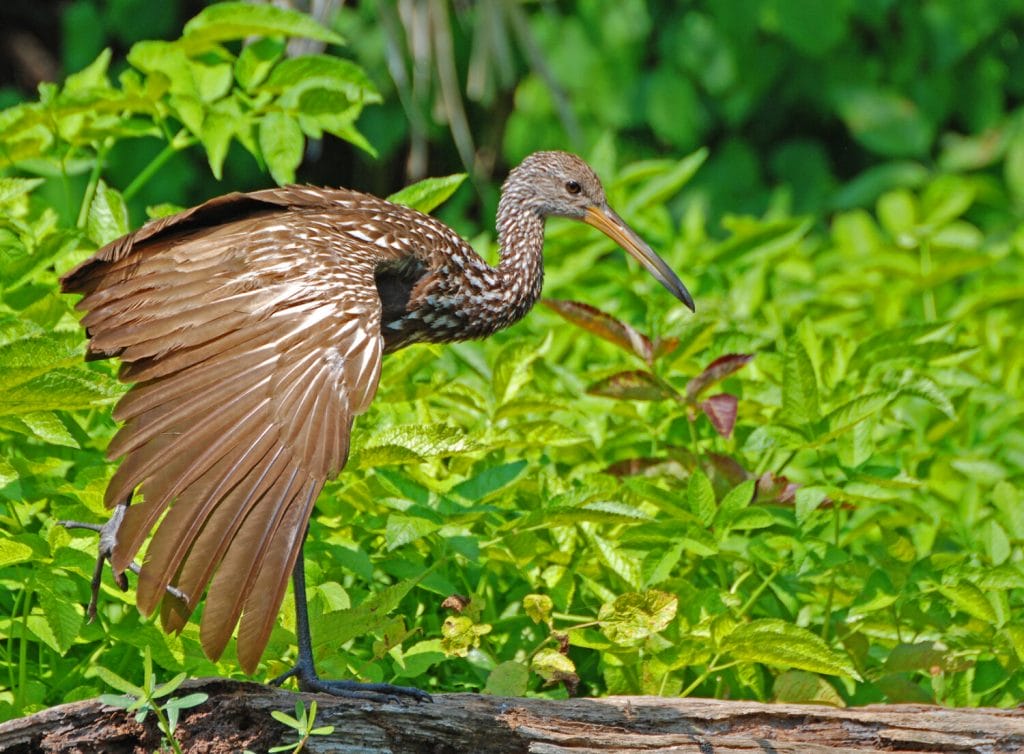
Identification and Size
An odd looking bird and difficult to immediately classify, the Limpkin is a large wader with a long, slightly curved bill. Starting in a creamy color at the head it blends into a darker brown down the body with a streaky pattern. It also has a large voice, being famed for its eerie call.
Length: 25 – 28.7 inches
Wingspan: 39.8 – 42.1 inches
Weight: 37 – 48.3 ounces
Distribution
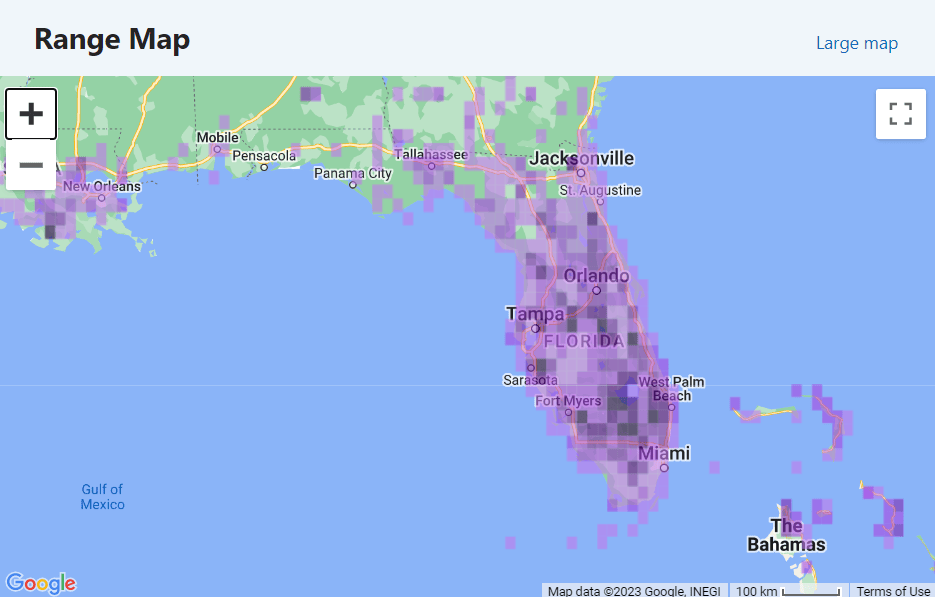
Suitable habitat are wetlands and marshes but the Limpkin can also bee seen in more urban areas like parks. It is resident in Florida and can be seen throughout the state.

Call
Diet
The Limpkin feeds on apple snails, almost exclusively.
Interesting Fact
As the Limpkin only eats apple snails, its bill is adapted to gain access to the meat. A small gap at the end allows the bird to insert it into the shell and then lever it open.
Great Blue Heron (Ardea herodias)

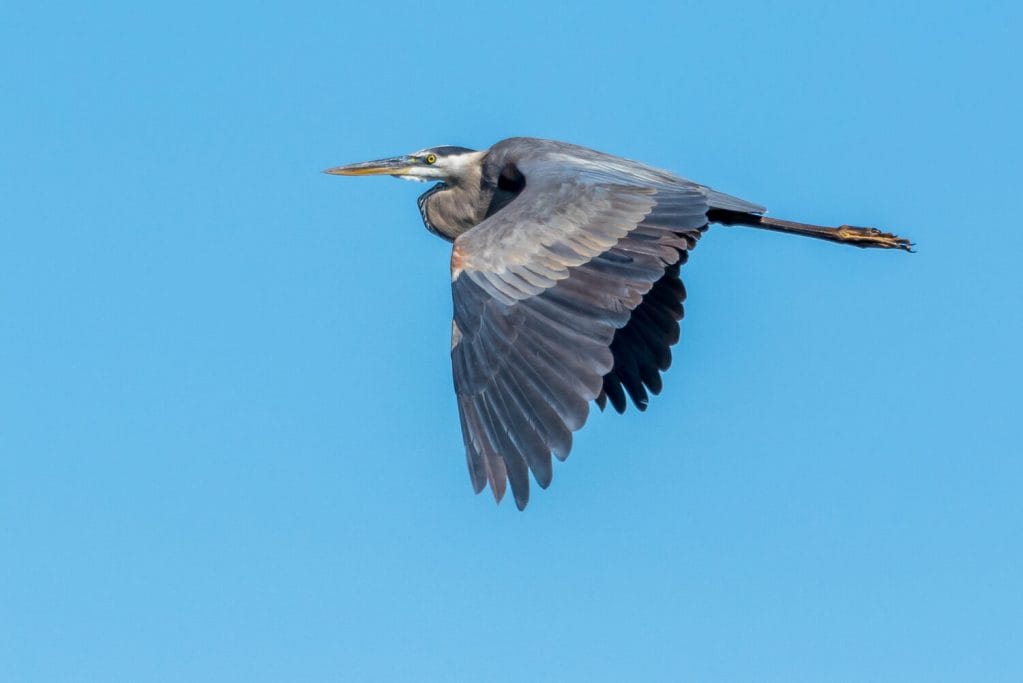
Identification
Another large heron, the Great Blue is actually a blue gray color with shaggy plumes on the chest. The face and head are white with a pair of dark blue streaks. The bill is a yellow orange.
Length: 38.2 – 53.9 inches
Wingspan: 65.8 – 79.1 inches
Weight: 74.1 – 88.2 ounces
Distribution

The Great Blue Heron is a permanent and common resident. It can be seen in any appropraite habitat across the state.

Call
Diet
The Great Blue Heron feeds, like others, on almost any type of fish it can find but also frogs, turtles and other smaller birds.
Interesting Fact
Great Blue Herons are so light that they are capable of standing on floating beds of kelp while they wait for prey to swim by.
Osprey (Pandion haliaetus)
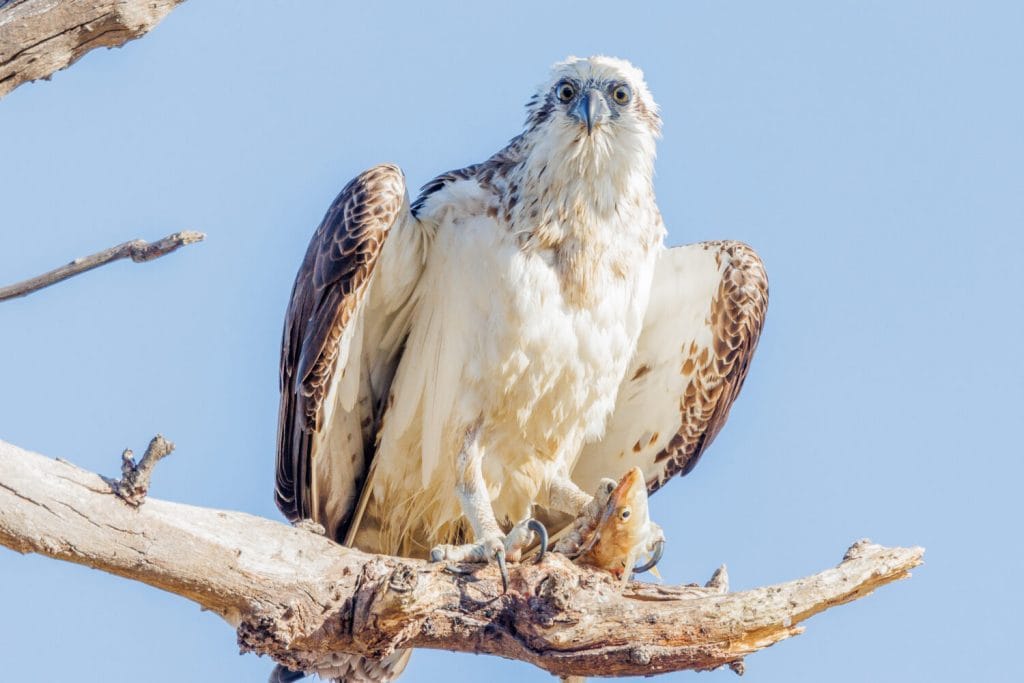

Identification
The Osprey is also known as the fish eagle and can often be seen carrying fish under its body, held by one foot in front of the other. Dark plumage on the back constrasts with pure white underneath. The white head has dark, thick streaks leading from the eye. The bill is a gray, thick hook.
Length: 21.3 – 22.8 inches
Wingspan: 59.1 – 70.9 inches
Weight: 49.4 – 70.5 ounces
Distribution

Most likely to be seen around the coast, the Osprey is a common raptor around any body of water. Can be seen all year round.

Call
Diet
The Osprey feeds exclusively on fish.
Interesting Fact
The Osprey holds fish under its body and in line with its body for a simple reason, to minimise wind resistance!
Bald Eagle (Haliaeetus leucocephalus)
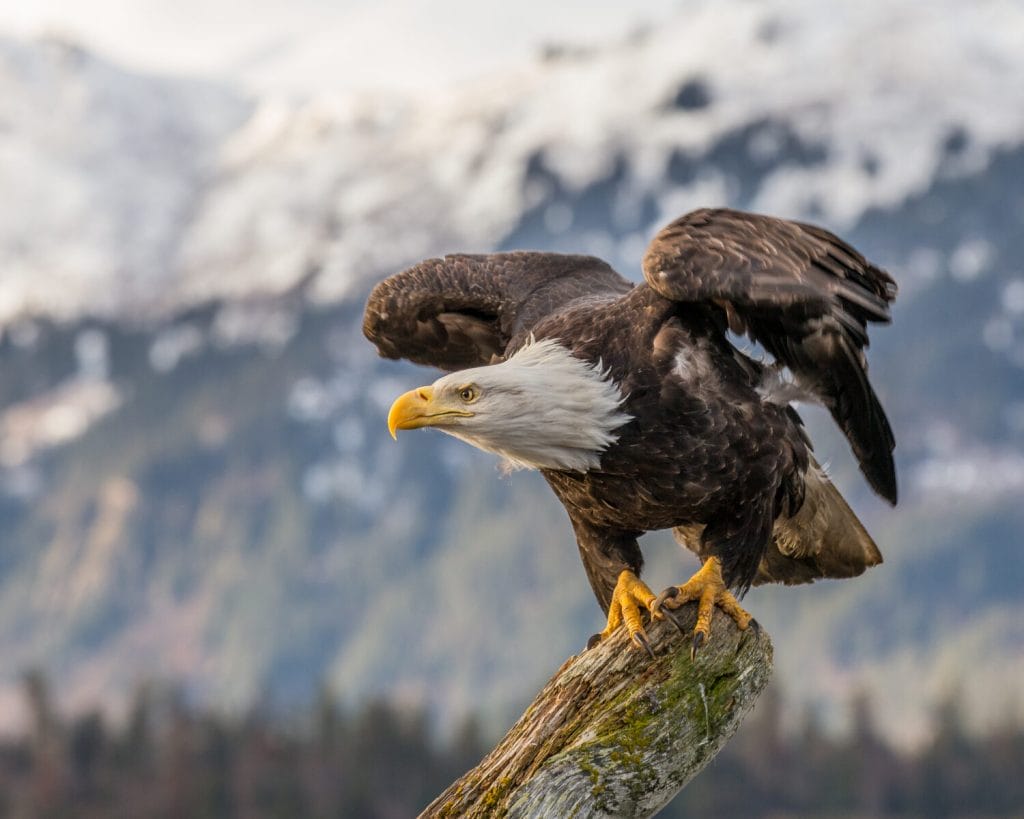

Identification and Size
Huge raptor and the national bird, seen on many emblems. A dark brown body is constrasted by a bright white tail and head. The bill is yellow, huge and hooked.
Length: 37.9 – 37.8 inches
Wingspan: 80 inches
Weight: 105.8 – 222 ounces
Distribution

A commonly reported bird in Florida, the Bald Eagle is present throughout the year and across the state.

Call
Diet
The Bald Eagle has a wide variety of preferred food. They will take fish that are near the surface or dead ones on the surface of the water. They will hunt live waterfowl and have been known to try to take birds as large a Canada Geese. Lastly, they will take a range of animals killed on the road.
Interesting Fact
The Bald Eagle can be a bit of a bully. Rather than fish for itself, it has been known to harrass other raptors like Osprey until they drop their catch.
Wood Stork (Mycteria americana)

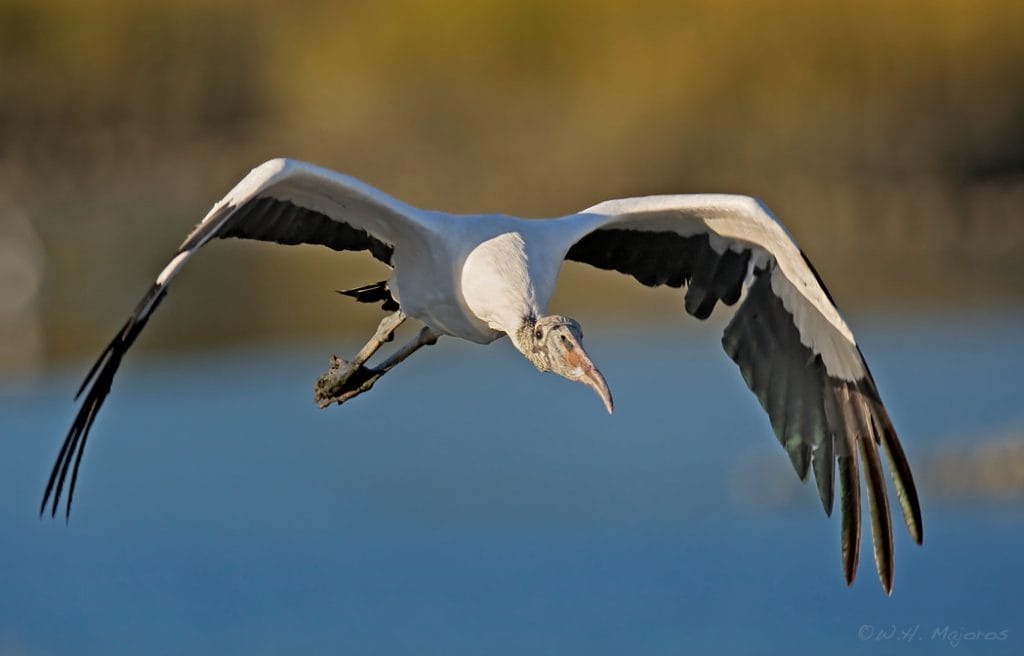
Identification and Size
The black and white body of the Wood Stork sits on very long, black legs. The bald head is also black and the bill is thick and slightly decurved at the end.
Length: 33.5 – 45.3 inches
Wingspan: 59.1 – 68.9 inches
Weight: 72.3 – 93.1 ounces
Distribution
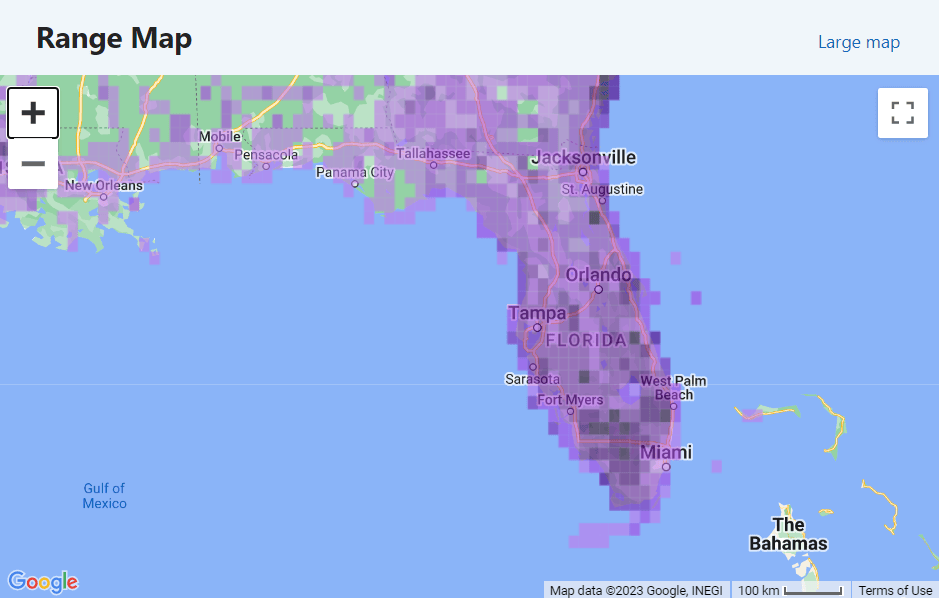
Another common resident of Florida. As seen on the range map above, the Wood Stork can be found across the state in any wetland area.

Call
Diet
The main diet of the Wood Stork is fish but it will also eat insects, crustaceans, small birds and reptiles.
Interesting Fact
The Wood Stork has a creative way to keep its exposed chicks cool by regurgitating water over them. A sort of portable cold shower!
FAQs
The Sandhill Crane stands at 47.2 inches and is the tallest standing bird in Florida.
Eagles are the biggest raptors in Florida. Osprey and the Bald Eagle feature on our list but the Crested Caracara is also large and there are many other large hawks in Florida.
Herons have the most large species in Florida. The Great White Egret and Great Blue Heron are on our list but there are also several other members of the heron and egret family that are also large.
Florida is a mecca for water birds and they feature heavily on our list. Herons, cranes and storks are all easily seen across the state, along with numerous species of raptor. This is why Florida is such a great location for bird watching.




